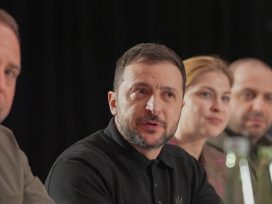
The ‘Trump–Putin deal’ again places Ukrainians in a subaltern role. The leaked contract with its fantasy $500 billion ‘payback’ has been compared to Versailles, but the US betrayal recalls nothing so much as Molotov–Ribbentrop.
Moves to disenfranchise Russian citizens in Estonia come against the backdrop of increasingly radical anti-Russian discourse and a tradition of national xenophobia. An Estonian-Russian responds.
Ethnic Russians make up about 25% of the Estonian population. Of these some 75 000 are Russian citizens. Many have no real connection with Russia and took Russian passports in the 90s, whether because of the Estonian language requirements, for travel reasons, or because they inherited citizenship from their parents.
Since the start of Russia’s criminal war against Ukraine, the Estonian government has taken a number of controversial steps that have affected local Russian-speakers. In late 2022, the government ruled that war graves and memorials that displayed ‘symbols of occupying powers’ would be relocated and removed; decisions on which tombstones and monuments this would affect were made by a secret government committee. This move was widely criticized by historians and heritage experts.
In the run-up to the March 2023 elections, liberal and rightwing parties campaigned on depriving permanent residents who hold Russian or Belarusian passports of the right to vote in local elections. They have had this right since the restoration of Estonian independence in 1991. While most legal experts believe the proposal to be unconstitutional, an analysis produced by the Ministry of Justice and published by Estonian Public Broadcasting in August suggests that the current government will attempt to move forward with this.
Aro Velmet – Editor, Vikerkaar
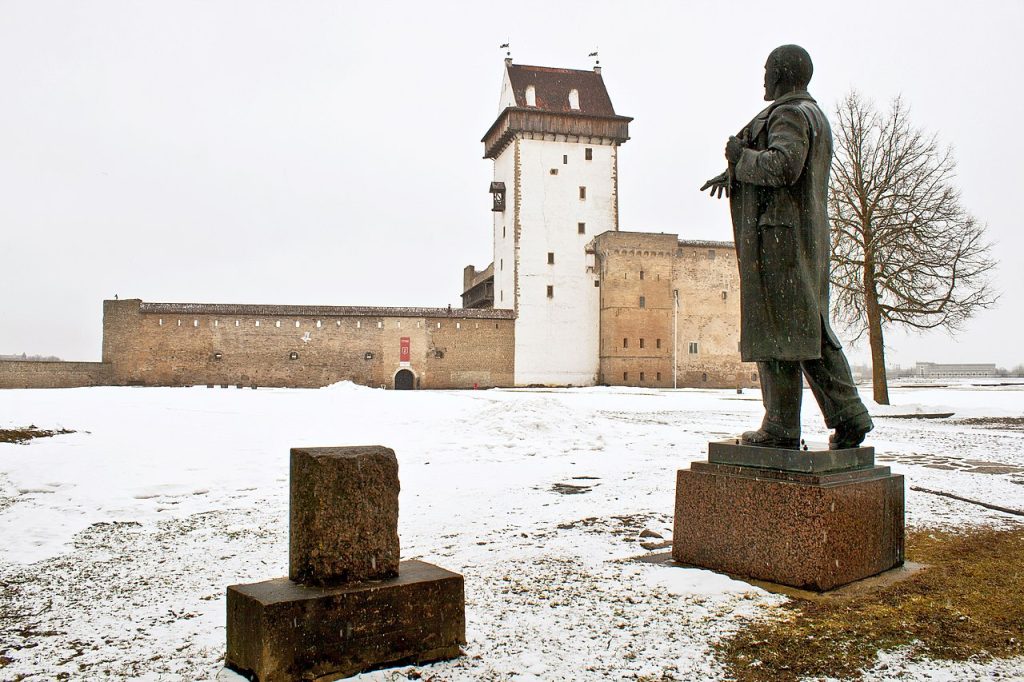
Lenin monument in Narva Castle, removed in December 2022. Source: Wikimedia Commons
Earlier this year, Vikerkaar magazine asked me to describe how the situation for Estonian Russians has changed since the outbreak of the war. For a long time, I couldn’t find the words. How can one convey the feeling that arose in February 2022? I sometimes dream of a cave; to escape it, I must crawl through a narrow hole – but I can’t. It’s a common nightmare. ‘Something there is that doesn’t love a wall’, as Robert Frost wrote. I suspect that inside us all there’s something that dislikes dead ends.
War is history’s dead end. By invading Ukraine, Putin has deformed the lives of millions. Some have been killed. Others have been mutilated – physically and mentally. The pain, hatred and anger are now so great that it will take decades for them to be overcome.
On the morning of February 24, a colossal black hole appeared, dragging everything and everyone into it. Lives, hearts, minds. Words are now no longer a means to change anything, only to say ‘enough’. It’s done. The train has left, the door has shut. I remember seeing a picture of Bucha, pre-war: Soviet utopian mosaics on the side of a block, boys and girls dancing. There won’t be any of that from now on. Or if there is, we will certainly be gone.
I say ‘we’, but of course those of us who are ‘only’ deprived of their rights in Estonia have nothing in common with those losing their lives in Ukraine or fleeing Russia and losing their homeland. These are different losses. The map of military actions is the same for us all, but the consequences differ, as do reactions to them. So I can’t speak on behalf of a ‘we’.
Local Russians in Estonia number a few hundred thousand individuals. There’s little to unite us. We have no political parties, no unifying cultural events and no common history. Generally speaking, we have none of the ‘identity’ that Estonian influencers like to write about. But I will venture to say that there is one thing that unites us: external pressure. This is what I want to discuss: the message that ‘we’ receive from public discourse, politics and the media. Let each decide for themselves how they would react if they were in ‘our’ skin.
As I see it, there are parallels between the situation of Estonian Russians today and that of the Sudeten Germans in Czechoslovakia in the 1930s (these parallels are much stronger in the case of Donbas, but they’re applicable to Estonia too). Hit from one side by the Great Depression, poverty and unemployment, Sudeten Germans were subjected to state discrimination from the other. The authorities imposed the Czech language (in schools, for example), which led to the growth of irredentist sentiments, both Nazi and communist. Hitler simply exploited these as an excuse to invade.
The Sudeten Germans were found guilty en masse. After the war, with the permission of the Potsdam Conference, Czechoslovakia deported half a million of them. Few had any connection to Germany. No one was interested in whether each individual supported Nazism or not. No one recalled the legacy of discrimination. They were condemned and punished, lumped into one ethnic group, because ‘the first casualty of war is complexity’. The fact that they were treated so unjustly was remembered only many years later. In history books.
Though isolated cases of deportation do exist, there are no mass deportations of Estonian Russians (yet). In Latvia, however, the authorities are now threatening to deport about 17 thousand resident citizens of the Russian Federation if they fail a language exam. It probably won’t come to that. But at the level of signalling, everything is all too clear.
Signals that say ‘you are not one of us’ are put out in Estonia, too – constantly and loudly. They are normalised in discourse, often with government support. You can, of course, say that there are other signals, good ones, and that one shouldn’t pay attention only to the bad ones. But that’s not how it works. The fear sparked by one loud signal is not extinguished by others.
Context plays a huge role. Take the installation of a downed Russian tank in the Tallinn’s Freedom Square. In Brussels or Stockholm, where there is no Russian population, this would be one signal; in Estonia, where every fourth person is Russian and many have some form of connection with Russia, and where there is a tradition of normalised xenophobia on national grounds, the signal is another.
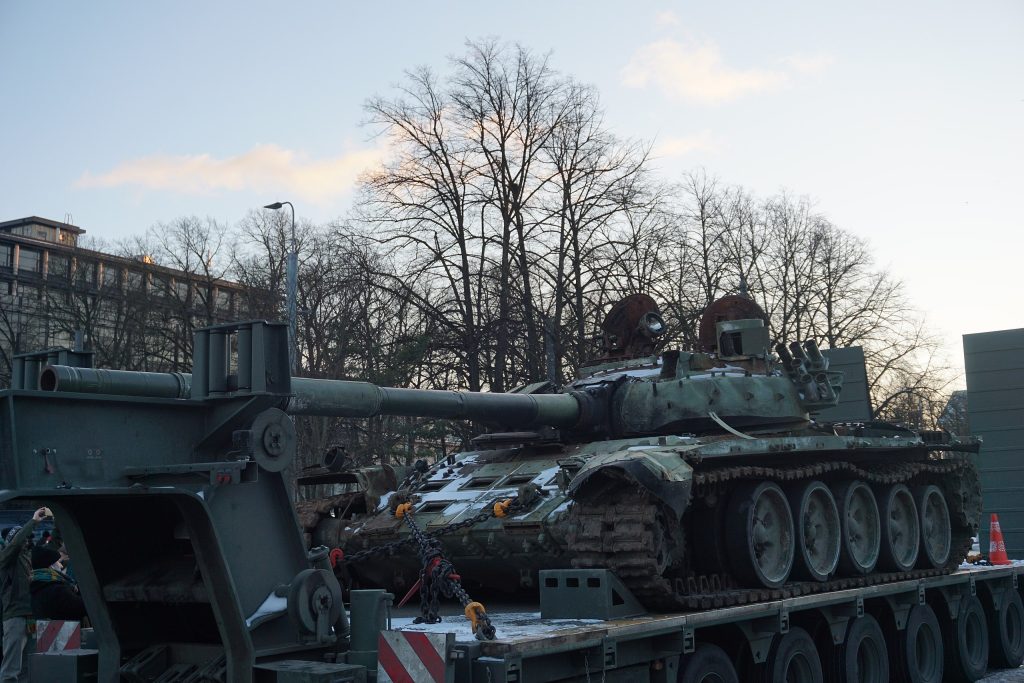
Captured Russian tank in Tallinn’s Freedom Square, 2023. Source: Wikimedia Commons
My own subjective feeling was that the authorities had done this precisely to deepen the split. It was as if they had put the tank there to say: ‘Look what bastards those Russians are, it’s good they’re being killed.’ Some people find this wonderful and take selfies with the tank. Others feel resentment and anger.
I am against the war. I know who is to blame (Putin and the Russians that are loyal to him). I strongly sympathise with Ukrainians and wish them victory. But I did not visit the tank. One could have shown the horrors that Russian troops are unleashing on Ukraine on a big screen, for example. The destroyed tank is about something else. It is not about Ukrainian pain – it’s about victory over Russia, which in our discourse is connected with Estonian Russians.
In one respect, this strategy could indeed be called ‘integrationist’ (the term used for Estonian policy towards Russian Estonians, which is in fact closer to ‘assimilation’ – ed.). You are pushed to self-define not just ‘whose side you are on’ but ‘who you are’: Russian or Estonian (Estonian-Russian means nothing here). If the latter, you should accept the official policy towards Estonian Russians. People understand this signal. By associating yourself with Russia, you are firmly on the side of darkness. Come over to the Light Side!
Thus there are ‘wrong’ people whose wrongness is understood very broadly – from direct support for Putin and the pro-Kremlin party Koos (‘Together’), to nostalgia for the USSR, to simply disagreeing with the policy of the current government. These people existed before, but over the past year and a half it feels like the attitude towards them has changed. It has become normal to say that we have to wait for them to ‘die out’. The message could not be clearer.
The ‘wrong’ people can also be deported. Let’s recall the campaign promise of the conservative party Pro Patria in this year’s March elections: to force local Russian citizens to condemn Putin’s aggression in writing or be deported. The policy was not implemented, and was also not particularly shocking, given that individual Estonian residents with Russian citizenship had already been expelled from the country.
Take one such story: on 30 September 2022, Sergei Neprimerov – 66 years old, raised in Estonia – travelled from Narva (Estonia, on the western side of Narva river) to Ivangorod (Russia, on the eastern side of Narva river) for a friend’s funeral, but was not allowed to return. At the border he was given papers banning him from entering Estonia and the Schengen zone for five years. The Internal Security Service (KAPO) considered Neprimerov a threat to national security and revoked his residence permit. He was found guilty of liking posts in support of Putin and actively participating in events related to the Second World War (events that were not officially forbidden).
Quite a few citizens of the Russian Federation have already been deported like this. Worse still, Estonia has managed to de facto deport two stateless persons to Russia – despite this being outright illegal in the case of holders of the so-called ‘grey’ (alien’s) passports. Progressive journalists and bloggers still believe that the KAPO did the right thing – even though the constitution (which nobody likes to remember) states that: ‘Everyone has the right to stay true to their opinions and convictions. No-one can be forced to change them,’ and that: ‘No-one can be prosecuted for their convictions.’ Constitutionally speaking, it doesn’t matter if you’re a Putinist, a Maoist or a Nazi. (What, we don’t have politicians with Nazi views?)
But Russia’s war against Ukraine has erased all of this. Once again, the message is clear: for the ‘wrong’ likes on social media or participation in the ‘Immortal Regiment’ (an event at the Victory Day parade – ed.), you can be declared a national security threat without trial – and deported. What will the KAPO consider a ‘security threat’ in six months’ time? Will an Estonian passport save anyone? After all, our laws allow us to revoke the citizenship of those who received it through naturalisation, as most Estonian Russians did.
Mostly importantly for Estonian Russians, they see that the law is of little concern as long as the punishment seems right. (Remember the fate of the Sudeten Germans.) This is the case around the current coalition’s proposal to disenfranchise Estonian residents who hold Russian or Belarusian passports by depriving them of the right to vote in local elections.
Lawyers do oppose this plan, but they are lawyers and have their own considerations. Besides them, almost nobody speaks out in defence of the permanent residents of Estonia with the ‘wrong’ passports. Unlike LGBT+ rights, for example, the rights of Estonian Russians do not trouble progressive activists. Estonian liberals stop being liberals where the ‘Russian question’ begins.
And so Estonian Russians understand: you cannot expect help from anywhere. I note in passing that more and more people are starting to blindly believe what the security state tells them. In my opinion, this is a very, very bad trend, which will come back to haunt Estonia.
Cancel culture is another phenomenon of the war era. Of the numerous ‘cancellations’ connected in one way or another with Russia,1 the worst signal given to local Russians was when, in September 2022, the Russian Theatre in Tallinn fired director Filipp Los, a Russian citizen who had moved to Estonia some years previously and is, as it happens, a vocal opponent of Putin.
On Facebook Los had criticized the actions of the Estonian authorities towards Russian citizens: ‘Underneath the cheers for supporting Ukrainian weapons and the victory of Good over Evil, rotten mangy Russophobia suddenly crawls out, and no one holds their nose or shouts: “Ugh!”’. He then reminded readers of the horrors which the deprivation of rights on ethnic grounds can lead to: ‘What will happen to our rights now? What line will our zealous neighbours stop at? Once, quite recently, as I recall, Estonia just as zealously exterminated Jews…’
Los’s subsequent dismissal was essentially political – the Russian Theatre did not hide its fear that the authorities would simply close it after such criticism. Conclusion: Russians – and Russian citizens – are not to draw parallels with the Holocaust. Estonians, on the other hand, may. But the story was not over: in March 2023, at the Vaba Lava theatre in Narva, director Andres Puustusmaa verbally assaulted Los, calling him a ‘fascist and Putinist’.2
After February 2022, our discourse began to clearly manifest what always happens in times of war: symbols became more important than reality. Thus, it is now possible to talk about the ideological effects of Soviet architecture. Take the comment of then Minister of Justice Lea Danilson-Järg that ‘Soviet monuments are a part of Russian attempts to influence our hearts and minds.’ According to this paradigm, people in Estonia – and especially Estonian Russians – are manipulable zombies. Upon seeing the five-pointed star on the Stalin-era residential block near the Stockmann department store in Tallinn, they are apparently consumed with an irrational sympathy for Putin.
Similarly, one argument for removing the monument of the Soviet tank in Narva (dedicated to the victory in WW2) last August was that its barrel was pointed in the direction of Tallinn. Not to mention the flowers that are brought there on 9 May, the Russian V-Day – surely an obvious demonstration of loyalty to Russia? This is why Soviet monuments to the victims of World War II in the Russian-speaking Ida-Virumaa County (border region populated almost entirely by Estonian Russians – ed.) were demolished without debate. By this logic, the destruction of the symbol is equivalent to the breaking of evil spells and de-zombification.
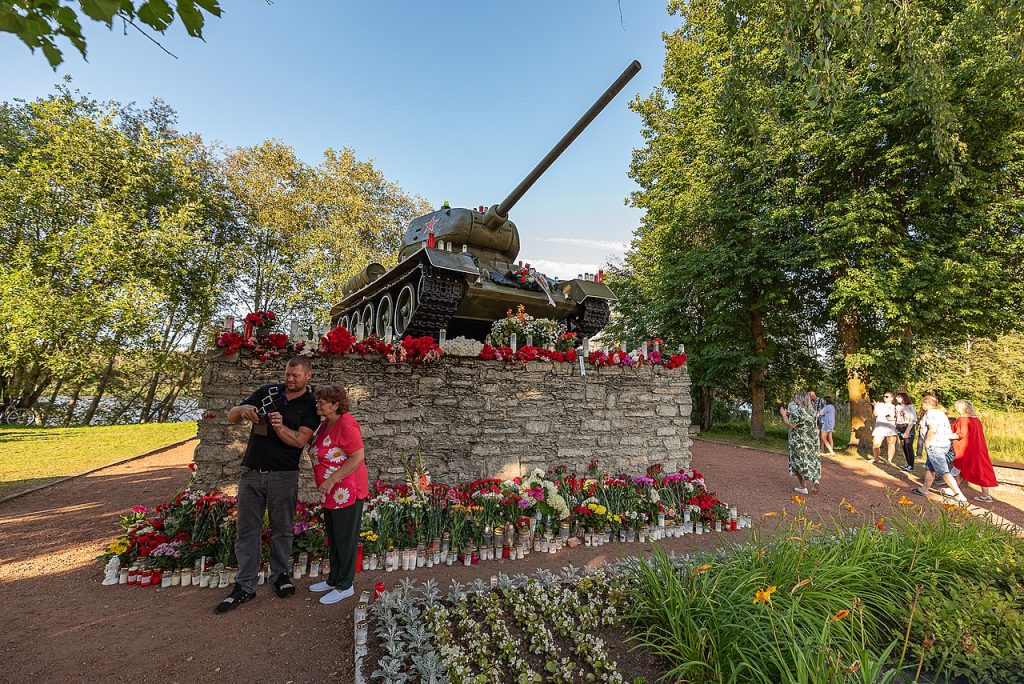
Selfies in front of the Soviet Tank in Narva before its removal in August 2022. Source: Wikimedia Commons
I understand that for any state – for the ideological construct called ‘the state’ – symbols are important: the flag, the anthem, the coat-of-arms and the rest. I understand that the war has exacerbated the need to assert the ‘right ideology’. But to look at the Soviet-era socialist realist mural on the ceiling of the National Opera and consider it a sign of active Russian propaganda (and to punish people for likes on social media) – is this not quite absurd?
The switch of Russian schools and kindergartens to Estonian-language education was doused in the same sauce. A section of the country’s opinion formers denounced the Russian language as a harbinger of imperialism, and the fight against Russian language instruction became a way to participate in the war on the side of Ukraine (again, symbolically).
Thus conservative deputy Riina Solman was certain that politicians, educators and teachers who opposed moving to Estonian-language instruction were working in the interests of the Kremlin. ‘It does not matter whether or not they are doing this willingly and on purpose,’ she emphasized, ‘just a glance at the behaviour of our aggressive eastern neighbour’ was enough to want to remove native Russian speaking children ‘from the informational sphere of the Russian world’.
This reform is a powerful signal: it turns out that the war justifies a step that no government coalition of any makeup had dared take for many years. Along the lines of: ‘Now we can get away with it.’ Despite the catastrophic shortage of teachers, lack of resources and the simple fact that, in reality, there is no prospect of any kind of significant ‘educational integration’ (i.e. schools attended both by Russian and Estonian children – ed.).
In parliament, conservative deputy Tõnis Lukas made it clear that one of the goals of the reform was to ensure that Estonian and Russian children should not, under any circumstances, study together: ‘If we keep Russian-instruction schools, then this is going to increase demand for Estonian schools … This is why we are pushing for this conversion, so that we do not have a situation where twice as many children are applying for schools that cannot accommodate all of them, thus further increasing the workload of teachers.’
I will now move on to a controversial thesis. Everything I’ve described is all too similar to a practice well known in imperial, colonial contexts – namely, civilising. Estonia is not an empire – on the contrary, it is a victim of empire. But in killing a dragon, we often risk turning into dragons ourselves. This is precisely what is happening right here, right now, in our midst.
Our country’s attitude towards the Russian minority can only be called ‘civilising’. Local Russians are represented as ignorant and sometimes malicious savages; like Kipling’s white man, the cultured Estonian selflessly offers them the light of civilisation, rescues them from captivity, liberates them from the influence of Russia and their own language – as a key to the ‘right’ infosphere. He dezombifies them, bestows them with democracy, their own true space of common customs (a phrase used by fomer president Kersti Kaljulaid), a culture free of imperial rot.
How does the logic of Solman and all those advocating for solely Estonian education differ from that of the East India Company officials, who in the 1830s planned to convert Indian schools into English-speaking ones – ‘the language of civilisation, the language of gentlemen’? It’s the same colonialism, just by another name.
If that’s an exaggeration, then only barely. It is now perfectly alright to publish interviews saying things like, ‘the Russians are a slave nation. Alas, democracy in Russia is totally impossible.’ Although about Russia, this comment automatically applies to local Russians. It is now absolutely fine to publish articles about the Narva alcoholic Sasha, who announced ‘publicly four days after Russia’s invasion of Ukraine that should the war come to Estonia, he would surely fight on the side of Russia and against Estonia’, but when he was deprived of a residence permit and about to be deported, challenged the decision in court. The journalist’s conclusion was pessimistic: ‘Our eastern neighbour is working hard to spread its ideology. There is no better example of its success than Sasha, who did not even grow up in a Russian-minded family in Russia, but was raised by an Estonian municipality in the Estonian Republic.’ In other words, if even the orphans that we have raised are like this, then over there it must truly be hopeless…
‘But of course,’ the article’s author concluded, ‘this problem can ultimately be solved. Some of these Sashas can be, must be deported to Russia. The most persistent Sashas will simply die out. But those who are more pliable will be subject to Estonian re-education.’
Civilization can be brought to Ida-Virumaa in other ways, too. You could try to ‘understand Narva, not condemn it’, while at the same time protecting these insufficiently rational and, alas, not particularly amenable Estonian Russians from Russian influence: ‘Our goal should be to prevent the emergence of new Russian-minded people. We therefore need to create an Estonian-minded environment for the young generation. For that, it is imperative that teachers, leaders of after-school programs, and employers – in general, as many members of the community as possible – are not Russian-minded.’
One could also pity the Russians: ‘In the future,’ wrote one journalist, ‘I’m still going to travel to the spa in Narva-Jõesuu (resort in Ida-Virumaa – ed.), and ask my nimble masseuse in clear and loud Estonian: ‘How’s it going?’ Enough with saying Kak delo? in Russian. Time to make a stand, I think, as I lay down on the massage table.’ Tally-ho, Ida-Viru, the white master has arrived! He wants a massage!
Taken together, what we have here is a cocktail of the Soviet attitude of ‘we are going to teach you to love the motherland yet’ and the British-colonialist ‘white man’s burden’. While forgetting that you can only love the homeland when the homeland loves you back. When it does something to ensure you are not poor and hungry, that you have a job, some certainty about the future, social guarantees. When it doesn’t take away your rights. When it doesn’t impose on you a single, correct understanding of history. When it doesn’t demonstrate double standards. When it doesn’t presume that you are a moron, a savage, a fifth columnist. And doesn’t punish you for things you did not do. When it behaves like a mother, not a stepmother; like a homeland, not an empire.
I don’t want to end on such a sour note, especially since I can already hear the outraged cries and even some calls for deportation. So allow me a couple of words on the solidarity among Estonian Russians. It does not exist in any formal way, but I think it is there on another level, a level that the state will never be able to do anything about.
External pressure creates a secret camaraderie. It’s like meeting a stranger who’s been through the same thing – you unwittingly feel sympathy and empathy for one another. That’s what the Estonian Russians now have amongst each other. The experience of external pressure, the experience of perceiving the signals I’ve described, is one and the same.
The war, even if it is far away and reaches you only indirectly, is always a reason to become a little more human.
Nikolai Karayev’s article was published in Vikerkaar in August. It had a mixed and heated reception on social media – from politicians, journalists and literati. By far the most controversial point was Karayev’s suggestion that there is a colonialist dimension to Estonian policy towards local Russian-speakers. Commenting on the article, several prominent journalists and intellectuals supported the disenfranchisement of permanent residents in order, as one journalist put it, ‘to save these people from their own stupidity’.
Aro Velmet – Editor Vikerkaar
Artists reprimanded in one way or another for some connection with Russia include Andres Mustonen, Linor Goralik, the ‘NitYA’ Theater, Tenno Pent Sooster and Sergei Bunkov (ed.)
What happened to the Narva performance artist Vovan Kashtan is also related to the ‘cancelling’ phenomenon – even his quite unambiguously anti-Russian and pro-Ukrainian public actions were met with arrests and fines.
Published 25 August 2023
Original in Russian
Translated by
Reuben Woolley
First published by Vikerkaar 8/2023 (Estonian version); Eurozine (English version)
Contributed by Vikerkaar © Nikolai Karayev / Vikerkaar / Eurozine
PDF/PRINTSubscribe to know what’s worth thinking about.

The ‘Trump–Putin deal’ again places Ukrainians in a subaltern role. The leaked contract with its fantasy $500 billion ‘payback’ has been compared to Versailles, but the US betrayal recalls nothing so much as Molotov–Ribbentrop.
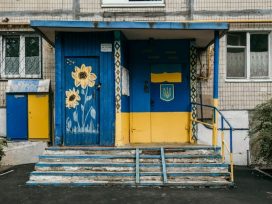
Ukraine faces its greatest diplomatic challenge yet, as the Trump administration succumbs to disinformation and blames them for the Russian aggression. How can they navigate the storm?